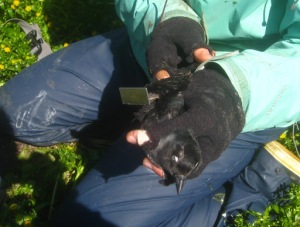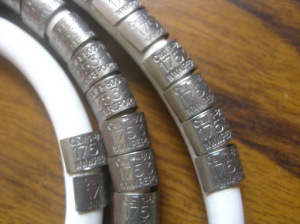The Birds Have Arrived!
April 7, 2011
The seabird breeding season on the Farallons has begun! We’ve been watching Common Murres, Brandt’s Cormorants, Cassin’s Auklets, and Pigeon Guillemots arrive to the islands, as they do each spring/summer season.
 |
| Common Murres at nesting sites |
The first birds to start nesting were the Cassin’s Auklets. These are cute little seabirds that hang out at night on the island (safety from the cover of darkness) and spend the day at sea or at their nest.
Their nests are burrows in the ground that usually consist of a long tunnel with a turn right before the actual nest. Cassin’s Auklets will also nest in crevices in rocky habitat. We want to be able to collect data on these birds that breed on the Farallons as a way to monitor the health of the population. Parameters such as reproductive success, timing of breeding, and chick growth and development can be used to accomplish this, and this data can easily be collected by simulating the nest environment using nest boxes. We make the nest boxes out of plywood and construct a tunnel using PVC pipe. The top of the box has a removable lid that allows us to see inside the nest and collect the data.
We can track specific individuals in a population by putting a metal band around their leg with a unique number for each bird. We know the ages of birds that we banded as chicks, and we always check band numbers to see if a bird we find is one of known age. We also band birds that are mates of known age birds.
 |
| Measuring the length of an egg |
 |
| Measuring the wing cord of a Cassin’s Auklet |
 |
| Bird in a bag |
We have over 400 boxes that get checked every 15 days as the breeding season progresses. Our first check yielded about 70 birds and our second yielded about 150 additional birds! We continue to check the boxes without birds in them through the summer to see if any new Cassin’s Auklets decide to move in. Each time I lift the lid of a nest box is like a surprise. Will there be a Cassin’s Auklet? Will there be another species of bird? Will there be an egg? Two eggs?? Fortunately, there are over 400 surprises out there waiting for us.







